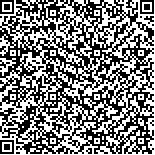|
| 引用本文: | 李龙召,黄平平,徐奎栋,赵峰.DNA/RNA提取及处理方法对评价沉积物中纤毛虫分子多样性的影响[J].海洋科学,2022,46(7):52-60. |
| |
|
| |
|
|
| 本文已被:浏览 815次 下载 1139次 |

码上扫一扫! |
|
|
| DNA/RNA提取及处理方法对评价沉积物中纤毛虫分子多样性的影响 |
|
李龙召1,2, 黄平平3, 徐奎栋1,2,4, 赵峰1,2,4
|
|
1.中国科学院海洋研究所海洋生物分类与系统演化实验室, 山东 青岛 266071;2.中国科学院大学, 北京 100049;3.山东省生物物理重点实验室, 德州学院生物物理研究院, 山东 德州 253023;4.中国科学院海洋大科学研究中心, 山东 青岛 266071
|
|
| 摘要: |
| 环境DNA (eDNA)技术结合高通量测序已广泛应用于评价微型生物多样性与群落构成。相较于eDNA,RNA在环境中易降解,环境RNA (eRNA)可更准确地反映群落近期生命活性状态。理论上,基于eRNA检获的生物多样性要低于eDNA检获的总体多样性。但前期已发表研究显示同一站点eDNA获得的多样性低于eRNA检获量,推测可能原因包括:1)样本量不同;2) RNA中存在DNA污染。为验证假设,本研究以陆架区2个站位沉积物中的纤毛虫为实验对象,系统性比较4种DNA/RNA提取方法:DNA直接提取(0.9 g沉积物),大样本量DNA直接提取(2 g),DNA洗脱法(2 g),RNA直接提取法(2 g);以及3种RNA提取后的处理方法:无DNA酶反转录,含DNA酶反转录,先纯化RNA再反转录。研究结果表明,大样本量(2 g) DNA直接提取法所检获的可操作分类单元(OTUs)约为小样本量(0.9 g)的2倍。相同样本量下,DNA洗脱法检获的OTUs最多,而DNA直接提取检获的OTUs低于有/无DNA酶反转检获的数量,先纯化再反转录所获得OTUs最少。就群落构成而言,DNA洗脱法和RNA纯化可有效降低浮游类群比例,可更真实展现底栖群落的构成。综上,建议使用DNA洗脱法评价沉积物中微型生物的总体多样性;采用eRNA研究具有生命活性的生物群落时,反转录之前可纯化RNA,以获得更加准确的具有生命活性的群落信息。 |
| 关键词: eDNA eRNA DNA/RNA提取 纤毛虫 分子多样性 |
| DOI:10.11759/hykx20210922001 |
| 分类号:Q958 |
| 基金项目:国家自然科学基金资助项目(41876171) |
|
| Effects of DNA and RNA extraction methods for the evaluation of ciliate diversity in marine sediments |
|
LI Long-zhao1,2, HUANG Ping-ping3, XU Kui-dong1,2,4, ZHAO Feng1,2,4
|
|
1.Department of Marine Organism Taxonomy and Phylogeny Institute of Oceanology, Chinese Academy of Sciences, Qingdao 266071, China;2.University of Chinese Academy of Sciences, Beijing 100049, China;3.Shandong Key Laboratory of Biophysics, Institute of Biophysics, Dezhou University, Dezhou 253023, China;4.Center for Ocean Mega-Science, Chinese Academy of Sciences, Qingdao 266071, China
|
| Abstract: |
| Environmental DNA (eDNA) has been used along with high-throughput sequencing to evaluate microbial diversity and community composition. Compared with eDNA, environmental RNA (eRNA) degrades easily and can be used to investigate the community of active taxon. The species richness obtained by eRNA is lower than that by eDNA in theory. However, previous studies have shown that the diversity obtained by eDNA at the same site is lower than that detected by eRNA. This unexpected finding may be attributed to the difference in the sample size and the DNA contamination in RNA. To test this hypothesis, we estimated the effects of DNA and RNA extraction methods on ciliate diversity in sediments obtained from the continental shelf area. Four extraction methods were performed:DNA direct extraction with 0.9 g sediments, DNA direct extraction with 2 g sediments, DNA elution, and RNA direct extraction from 2 g sediments. Meanwhile, three types of eRNA treatments before the reverse transcription, including the addition of DNA enzyme, no addition of DNA enzyme, and purifying RNA, were also compared. The results revealed that the number of operational taxonomic units (OTUs) detected from 2 g sediments was about twice that from the 0.9 g sediments by DNA direct extraction. Using the same sample size, the highest number of OTUs was detected via DNA elution and the lowest number by purified RNA. The number of OTUs detected by DNA direct extraction was lower than that by eRNA, irrespective of the addition of DNA enzyme. In terms of community composition, DNA elution and RNA purification can effectively reduce the proportion of planktonic groups, thereby improving the estimates of the composition of the benthic community. In summary, the DNA elution method is recommended for evaluating the total diversity of microorganisms in marine sediments. eRNA can be used after purification to investigate active communities. |
| Key words: eDNA: eRNA DNA / RNA extraction ciliate molecular diversity |
|
|
|
|
|
|
